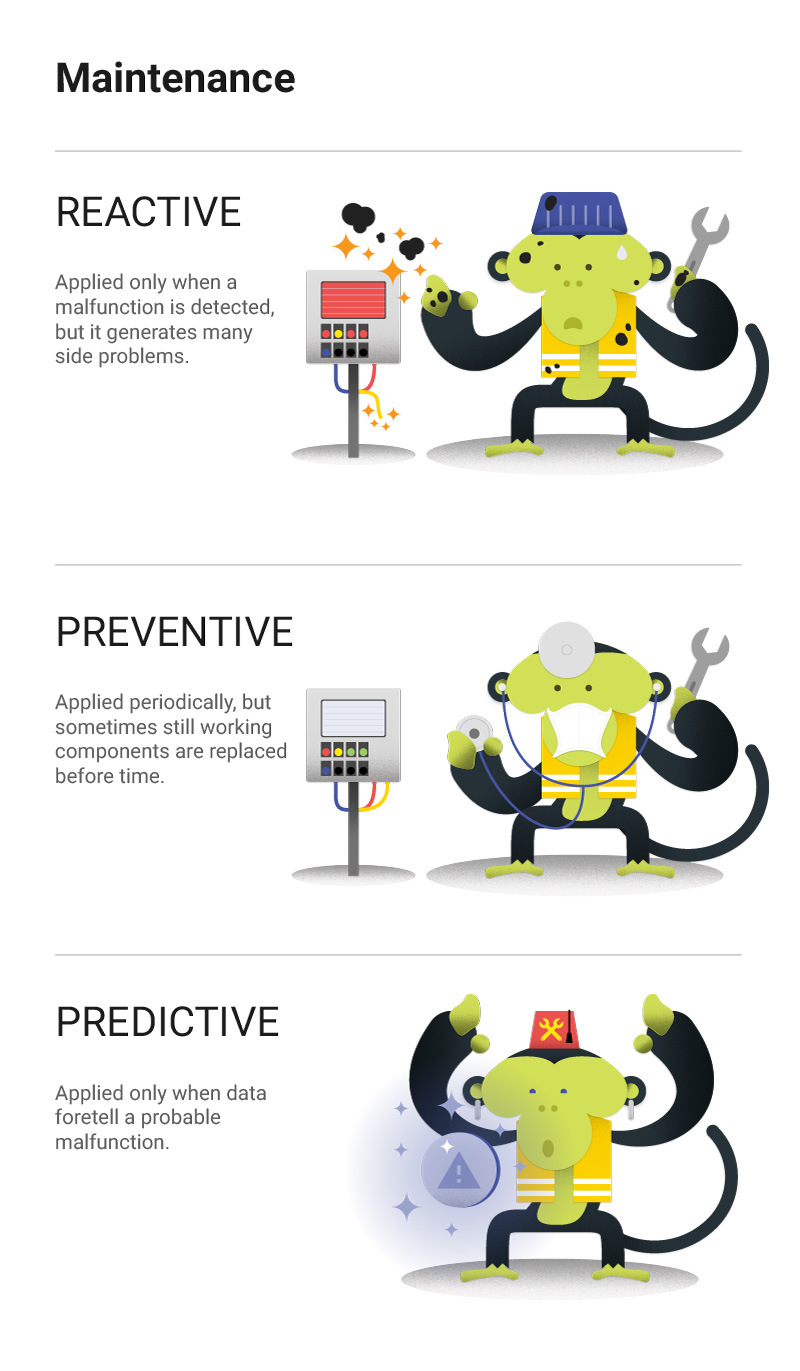IoT: what is predictive maintenance?
Predicting and planning maintenance thanks to IoT
By Niccolò Maria Menozzi
Maintenance plans are fundamental for any production activity. To guarantee the good working order of company resources, maintenance must include regular and recurrent repair activity. Now you can do more: predict the future.
Ignoring maintenance routines means risking unpredictable malfunctions and breakdowns which are caused by regular machine wear and tear. These breakdowns require expensive repairs and mean plant downtimes which impact production implying even higher costs. It gets even worse when you actually have to replace the machines.
So far traditional industrial maintenance has been mostly reactive, i.e. reacting to problems as they occur. This approach allows production to start up again, but it doesn’t allow you to avoid the problems that the breakdown generates as a domino effect.
The advantage of this system is that you only have to replace the parts that are actually broken, without having to change those that have not really reached the end of their product lives. However, this implies delays in obtaining replacement parts and waiting times for technicians to be available.
Preventive – or planned – maintenance is another, more reliable, method which includes scheduled interventions aimed at reducing the possibility that something goes wrong. Based on the time and intensity of use of the machines, maintenance sessions for replacement and check-ups are estimated.
This allows for rationalised scheduling of interventions at the best times, for example when the installation stops and to avoid fallback effects on company production and logistics.
This system significantly reduces machine downtime, but sometimes the parts are replaced before reaching the end of their life cycle and are not exploited to the fullest.
In recent years a new and more effective method has emerged, based on ideas that developed in the 80’s and 90’s, predictive maintenance.

What is predictive maintenance?
The aim of predictive maintenance is to keep installations running while monitoring the health of the machines to anticipate the possible occurrence of problems.
Predictive maintenance uses IoT technology that works with small electronic sensors (read this article if you want to know more about what IoT is).
The predictions are based on data supplied by company IT systems designed specifically for this purpose (data mining).
The great quantity of data collected by the machines can produce a detailed picture of the behaviour of the installation making it possible to intervene and avoid more serious problems.
Preventive maintenance applies regular checks without having an in-depth knowledge of the real state of the machines. Predictive maintenance, on the other hand, monitors in real time and identifies all the signs that could indicate a breakdown or malfunction, so it can do away with unnecessary precautions in the long term, keeping only what is strictly necessary.
The result is an installation that can significantly reduce yearly downtime, avoiding useless early replacements and improving the ratio between costs and production hours.
How does predictive maintenance work?
Predictive maintenance, in short, collects the data sent by the sensors to forward it to a web app also called CMMS (Computerized Maintenance Management System) that analyses it, allowing tailored solutions.
The CMMS’s offer many functions and algorithms that simplify and support strategic evaluations to optimise the performance of the installation. The aggregated data is analysed by the data analyst or other managerial technical figures who can interpret the data correctly.
Some IoT statistics for 2020 indicate a significant growth of these technologies with 51% of IoT software dedicated to predictive maintenance in the industrial and manufacturing sectors (data from Forbes in the article linked above).
You can find an in-depth analysis of the benefits of CMMS in our article 6 reasons to have an IoT web app in the production sector.
Due to the effectiveness of these systems, investments are growing year by year also considering the increasingly important needs related to productive sustainability and environmental protection. Indeed nowadays saving energy and resources is also an ethical issue and not just a question of company economics.
What’s more, there are incentives and funds for companies that invest in technological updates relating to Industry 4.0. Why not take advantage of them? As software experts, we can bring innovation and value to your IoT infrastructure. If you want to know more and evaluate a CMMS for your company don’t hesitate to contact us!